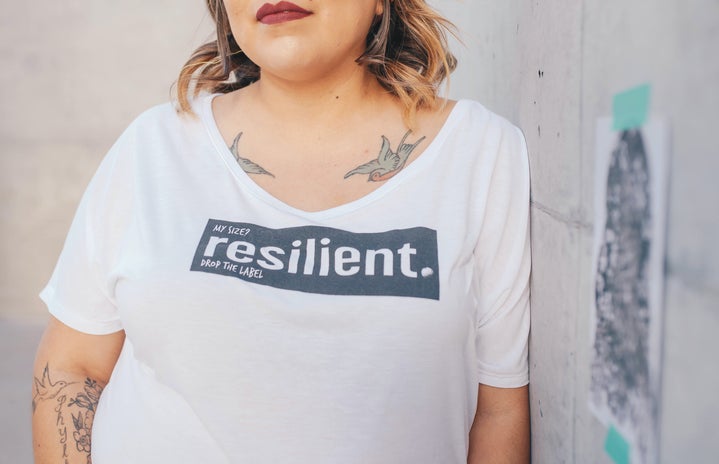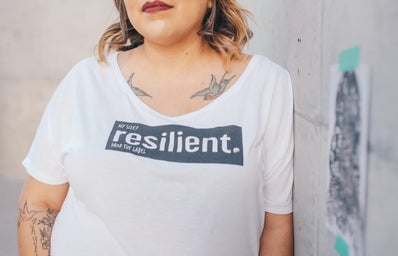What’s Underneath: UF Edition
Considering the media’s portrayal of the “ideal woman”, it comes as no surprise that many women feel subordinate to perfection. Although the media plays a significant role in negative body image among women, other factors, including one’s childhood, culture, and past relationships, also heighten insecurities. In order to discuss these all-to-often overlooked contributors to insecurity, my friend Alexie and I conducted a body-positivity project at our university. Inspired by the What’s Underneath Series, we invited ten participants to answer a variety of questions about their bodies, while dressing down to their undergarments. These were the results:
The Role of Puberty
In schooling systems across the country, there comes a time when boys and girls are separated into locker rooms. During this period, it gives adolescents the opportunity not only see the bodies of their peers, but to compare their rate of development. As college students, we now know that people develop at different speeds; but as an adolescent, it is easy to feel like an outcast when you’re either developing at a faster or slower pace than your peers.
Many of the participants recalled becoming aware of their bodies between 8 and 13 years old, when they began to notice breast development, or lack thereof. For others, their awareness was triggered by remarks made by their peers or family members. One participant specifically recalled being extremely frightened about going through male puberty because she does not identify as a male.
It is evident that puberty, and remarks made during this stage, have a lasting impact on a woman’s confidence. For girls especially, puberty is a period of tremendous vulnerability, and many girls suffer both mentally and emotionally during this stage of development.
European Features in the Media
When asked about the media’s impact on the perception of their bodies, many of the participants stated that they felt the need to be lighter, skinnier, and overall, more feminine. Taking into account the media’s portrayal of women, by predominantly showcasing European features, cisgender, heteronormative, and hyper-feminine airheads, it’s only natural that women feel inferior to these false images of “perfection”. Currently, the media has shown significant improvements in its inclusiveness and representation of women, but the notion prevails that European features are required to be beautiful.
Women as Objects
A common cross cultural belief is that the female body is simply an object created for the pleasure of men and a means of reproduction. Cultural body standards not only set a norm for how the female body should look, but also it’s purpose. Many participants expressed being ridiculed for not living up to these standards, reinforcing the feeling that their bodies are simply spectacles for the male gaze.
Skinny Girls Can’t Complain
When it comes to body-positivity projects, I notice that plus-sized women are typically the focus, whereas petite women are often absent. It makes sense to focus on plus-sized women, due to their lack of representation in the media. But, by failing to allow smaller women to contribute to the conversation of body positivity, we as a society are instilling in women that the skinnier they are, the more confident they should be; this in turn reinforces the notion that there is a such thing as a “perfect body”. It is unfortunate that, as a society, we have failed to realize that perfection is a subjective phenomenon.
She’s A Woman
Before taking on the task of creating What’s Underneath: UF Edition, I looked to other body positivity projects for inspiration. I was disappointed to see that many failed to include trans women. There were, however, separate body-positivity videos specifically highlighting trans people. This did not satisfy me. In fact, this kind of separation brought to mind themes of racial segregation seen in 1960s America. If we have learned anything from this time in history, it is that segregation denies equality, encourages hatred, and ultimately, divides us as a nation. When creating such projects that aim to encourage self-acceptance, inclusivity should be of top priority, because a trans woman is a woman no less.
We All Have Insecurities
No matter your age, race, body-size, we all have insecurities – and that’s okay.
Moving Forward
A common struggle amongst all participants was the process of learning to accept oneself overtime. I think this is a phase that we all must go through at some point in our lives in order to finally find peace.
Be Free. Be Beautiful.
Ultimately, I wanted the project to illustrate that the perfect body is simply a social construct; so, why should women bother to live up to these standards when they are simply illusions? Although it is easier said than done, the best way to be body-positive is to accept and embrace the self, and in this, one will find that freedom and beauty are not as difficult to obtain.
Photo credit: Shannon Sutherland

